The Longines Master Collection 190th Anniversary, a collection of three special-edition watches, commemorates the latest milestone year for the historic Swiss watch brand. And while the new watches themselves are worthy of attention, they also represent the culmination of nearly two centuries of bold innovation and savvy business leadership that have helped shape and transform not only the company but the modern watch industry. Here we explore some of the highlights of Longines' star-studded history before diving into a hands-on review of the Master Collection 190th Anniversary edition in stainless steel.
Foundations (1832-1908)
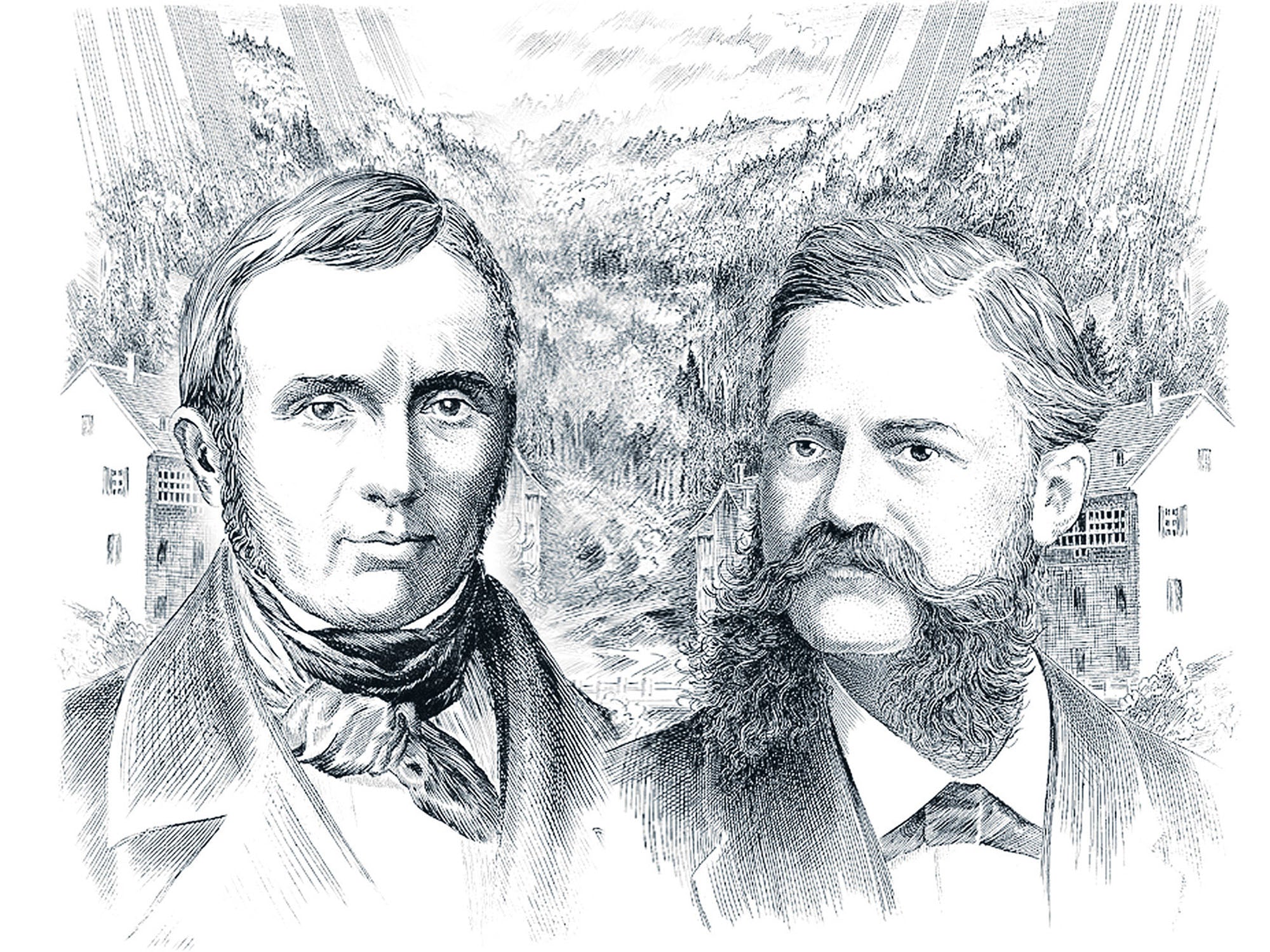
Longines was founded in 1832, originally as Raiguel Jeune et Cie., in the Swiss Jura town of Saint-Imier by Auguste Agassiz and two partners. Agassiz (above, left) became the sole proprietor in 1846 after both partners, attorneys by trade, retired from the watch business, and shortly thereafter, he brought his nephew, an enterprising economist named Ernest Françillon (above, right), into the company. It was Françillon, in 1867, who moved all of the firm’s various watchmaking disciplines — which were scattered throughout dozens of independent workshops called établisseurs — under one roof, to a factory that was situated in a scenic area called “Les Longines” or “The Long Meadows,” thus giving the company its now-familiar name.
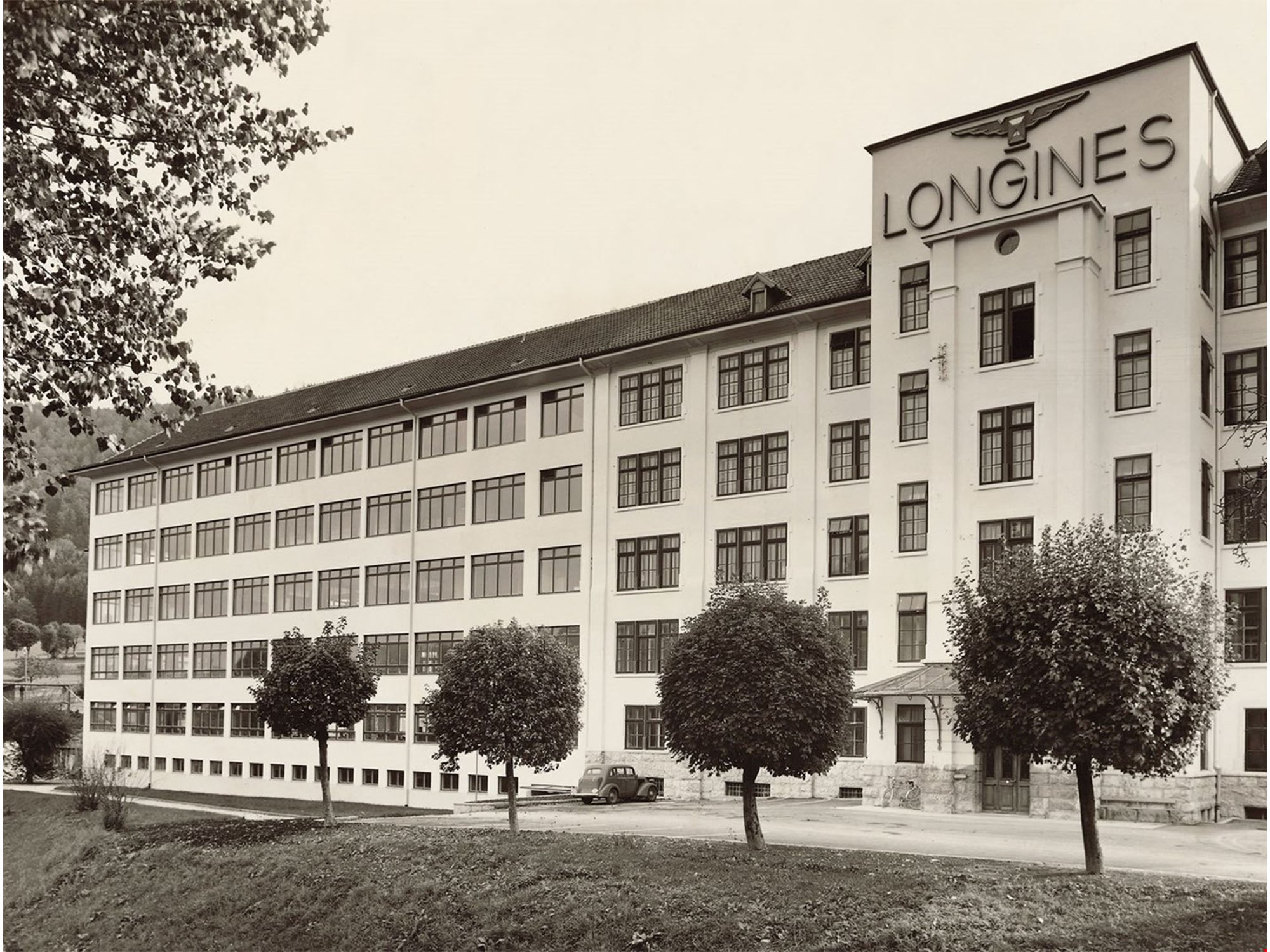 In 1889, Francillon registered the famous Longines logo with a winged hourglass — today the world’s oldest unchanged, active logo according to the World Intellectual Property Organization (WIPO). Among Longines’ many milestones under Françillon’s management were the company’s first in-house movement, Caliber 20A, and its first chronograph movement for hand-held stopwatches, Caliber 20H, which helped Longines establish the longstanding reputation for innovations in sports timing, particular in equestrian sports, that it enjoys to this day. Longines was the Official Timekeeper of the Olympic Games in Athens in 1896, which was the first international Olympics held in modern times.
In 1889, Francillon registered the famous Longines logo with a winged hourglass — today the world’s oldest unchanged, active logo according to the World Intellectual Property Organization (WIPO). Among Longines’ many milestones under Françillon’s management were the company’s first in-house movement, Caliber 20A, and its first chronograph movement for hand-held stopwatches, Caliber 20H, which helped Longines establish the longstanding reputation for innovations in sports timing, particular in equestrian sports, that it enjoys to this day. Longines was the Official Timekeeper of the Olympic Games in Athens in 1896, which was the first international Olympics held in modern times.
Early Wristwatches (1908-1927)
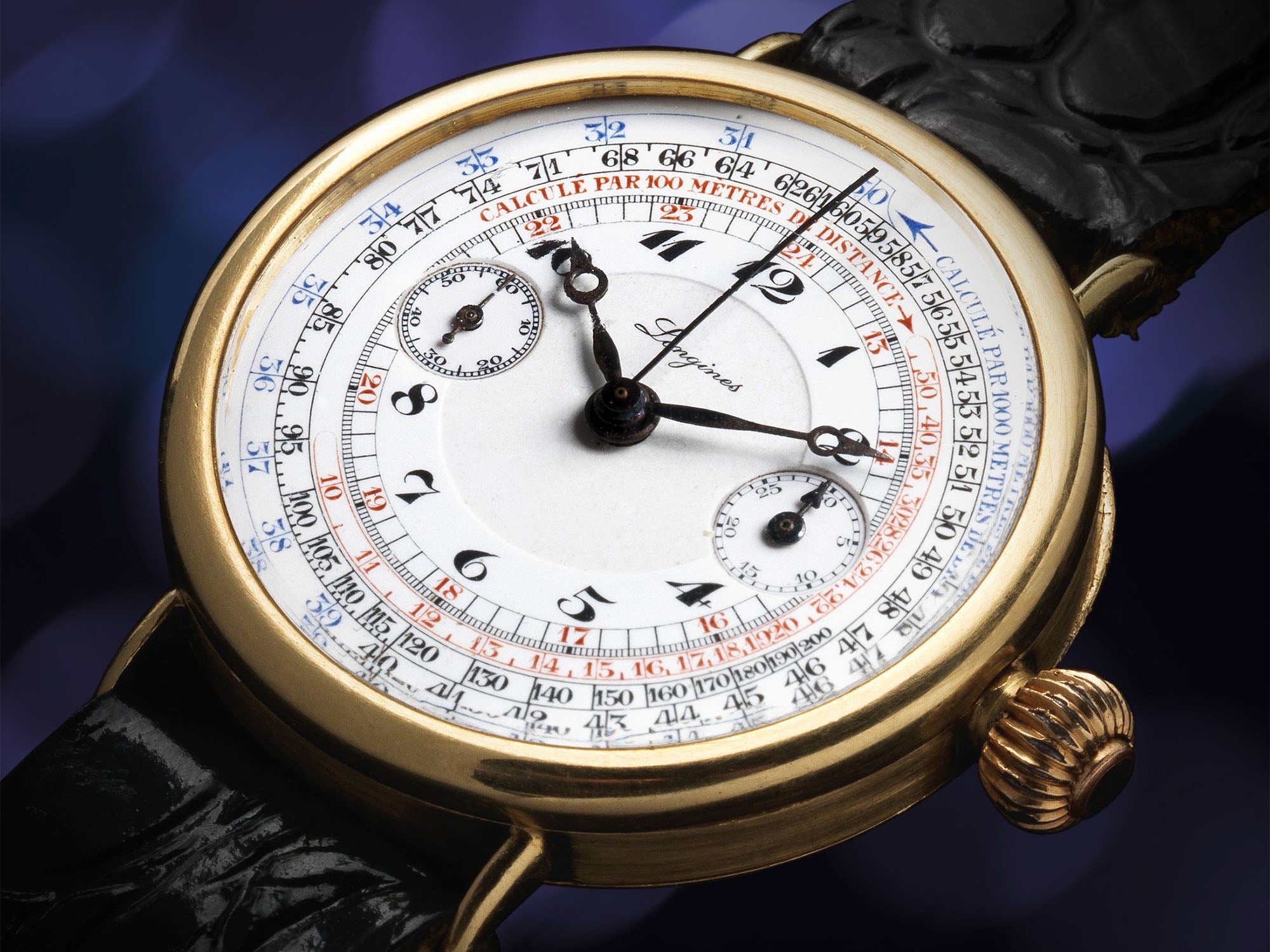
Longines continued expanding its scope of horological complications as the 19th Century gave way to the 20th, and pocket watches eventually yielded the stage to wristwatches in the wake of the First World War. A pocket watch made for a client in the Ottoman Empire (modern-day Turkey) in 1908 featured the first two-time-zone dial, enabling its owner to convert between Turkish and Western time. Longines’ Caliber 13.33Z, installed in a wristwatch in 1913, ushered in the era of the modern chronograph movement, with its ⅕-second accuracy. In 1925, the brand claimed two world’s firsts: the first wrist chronograph with a flyback function and two independent pushers, and the first wristwatch that indicated a second time zone on its dial; the latter timepiece inspired the Spirit Zulu Time model that debuted in 2022.
From Aviation to Diving (1927-1960)
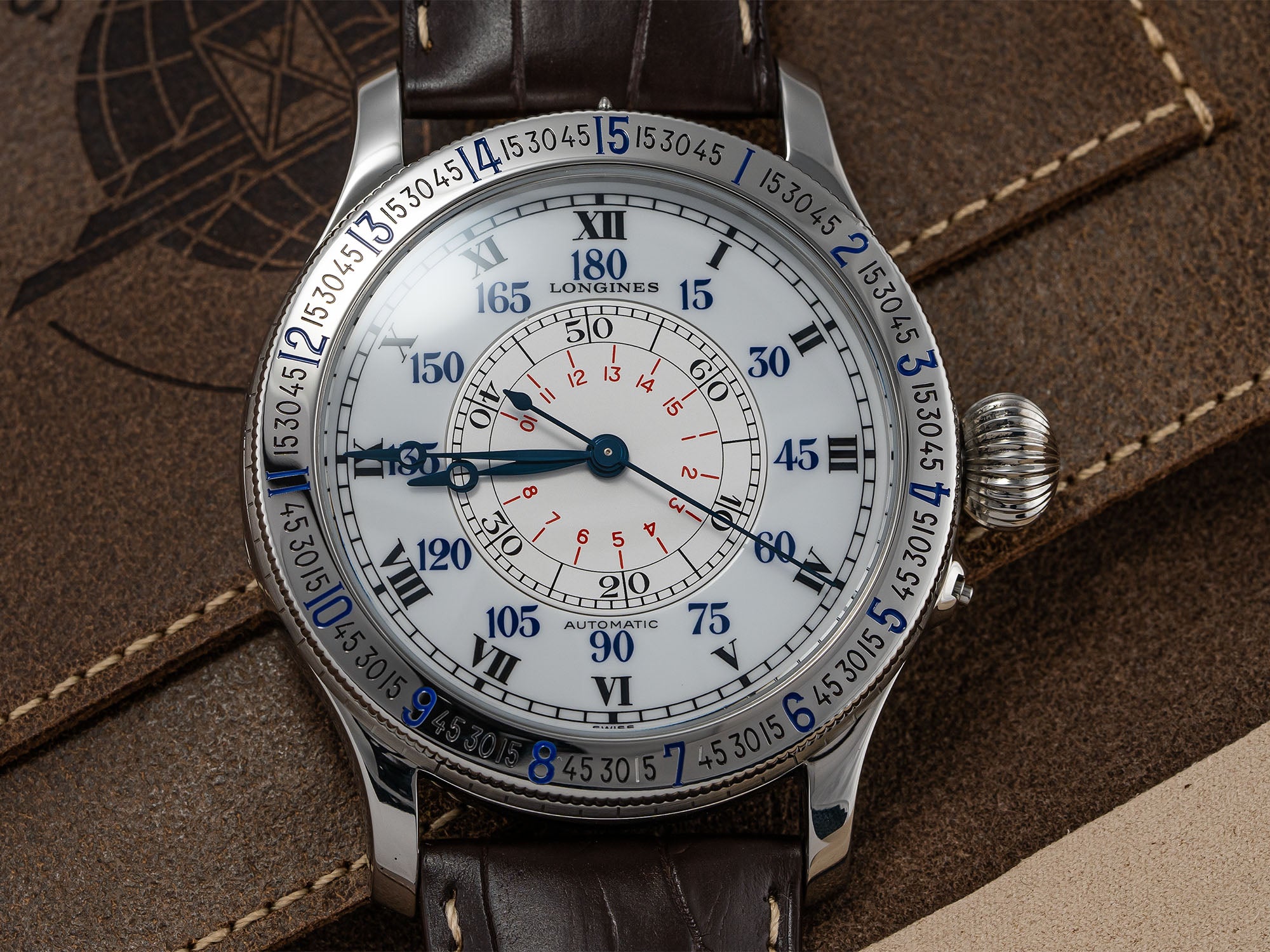 With the dawning age of manned flight in the early 20th century also came advances in watchmaking, as aviators required reliable, robust, and legible timepieces that could withstand the rigors of being airborne while also serving as navigational aids. Longines worked with Captain Philip Van Horn Weems of the U.S. Navy, an early proponent of celestial navigation and one of the most influential figures of early aviation, to produce the so-called Weems Second-Setting Watch in 1929. Aimed squarely at pilots, the watch was distinguished by an adjustable seconds hand and a rotatable inner disk that could be synchronized with a radio signal in a cockpit to set the time. Charles Lindbergh, a protegé of Weems, used that timepiece as the basis for his own, more complex idea for a pilot’s watch, which combined the inner rotating 60-second disk, a traditional 12-hour ring, a 180-degree scale, and a rotating 360-degree outer bezel on a single wristwatch that a pilot could use in concert with a sextant to determine his “Hour Angle,” or longitude, to assist in navigation. Longines released the Lindbergh Hour Angle Watch (above) to the public in 1931; it remains in the collection today. Throughout the early 20th Century, Longines watches were fixtures on the wrists and in the cockpits of aviation’s pioneers, including Amelia Earhart, Howard Hughes, and Amy Johnson. Those historical timepieces provided the inspiration for Longines’ modern-day Spirit collection, which debuted in 2020. During World War II, Longines produced distinctively styled watches for military pilots under the umbrella of “Avigation” — a portmanteau of “aviation” and “navigation” — including the Avigation BigEye Chronograph, a modern version of which joined the Heritage collection in 2017. (Check out Teddy's review of the Avigation BigEye here.)
With the dawning age of manned flight in the early 20th century also came advances in watchmaking, as aviators required reliable, robust, and legible timepieces that could withstand the rigors of being airborne while also serving as navigational aids. Longines worked with Captain Philip Van Horn Weems of the U.S. Navy, an early proponent of celestial navigation and one of the most influential figures of early aviation, to produce the so-called Weems Second-Setting Watch in 1929. Aimed squarely at pilots, the watch was distinguished by an adjustable seconds hand and a rotatable inner disk that could be synchronized with a radio signal in a cockpit to set the time. Charles Lindbergh, a protegé of Weems, used that timepiece as the basis for his own, more complex idea for a pilot’s watch, which combined the inner rotating 60-second disk, a traditional 12-hour ring, a 180-degree scale, and a rotating 360-degree outer bezel on a single wristwatch that a pilot could use in concert with a sextant to determine his “Hour Angle,” or longitude, to assist in navigation. Longines released the Lindbergh Hour Angle Watch (above) to the public in 1931; it remains in the collection today. Throughout the early 20th Century, Longines watches were fixtures on the wrists and in the cockpits of aviation’s pioneers, including Amelia Earhart, Howard Hughes, and Amy Johnson. Those historical timepieces provided the inspiration for Longines’ modern-day Spirit collection, which debuted in 2020. During World War II, Longines produced distinctively styled watches for military pilots under the umbrella of “Avigation” — a portmanteau of “aviation” and “navigation” — including the Avigation BigEye Chronograph, a modern version of which joined the Heritage collection in 2017. (Check out Teddy's review of the Avigation BigEye here.)
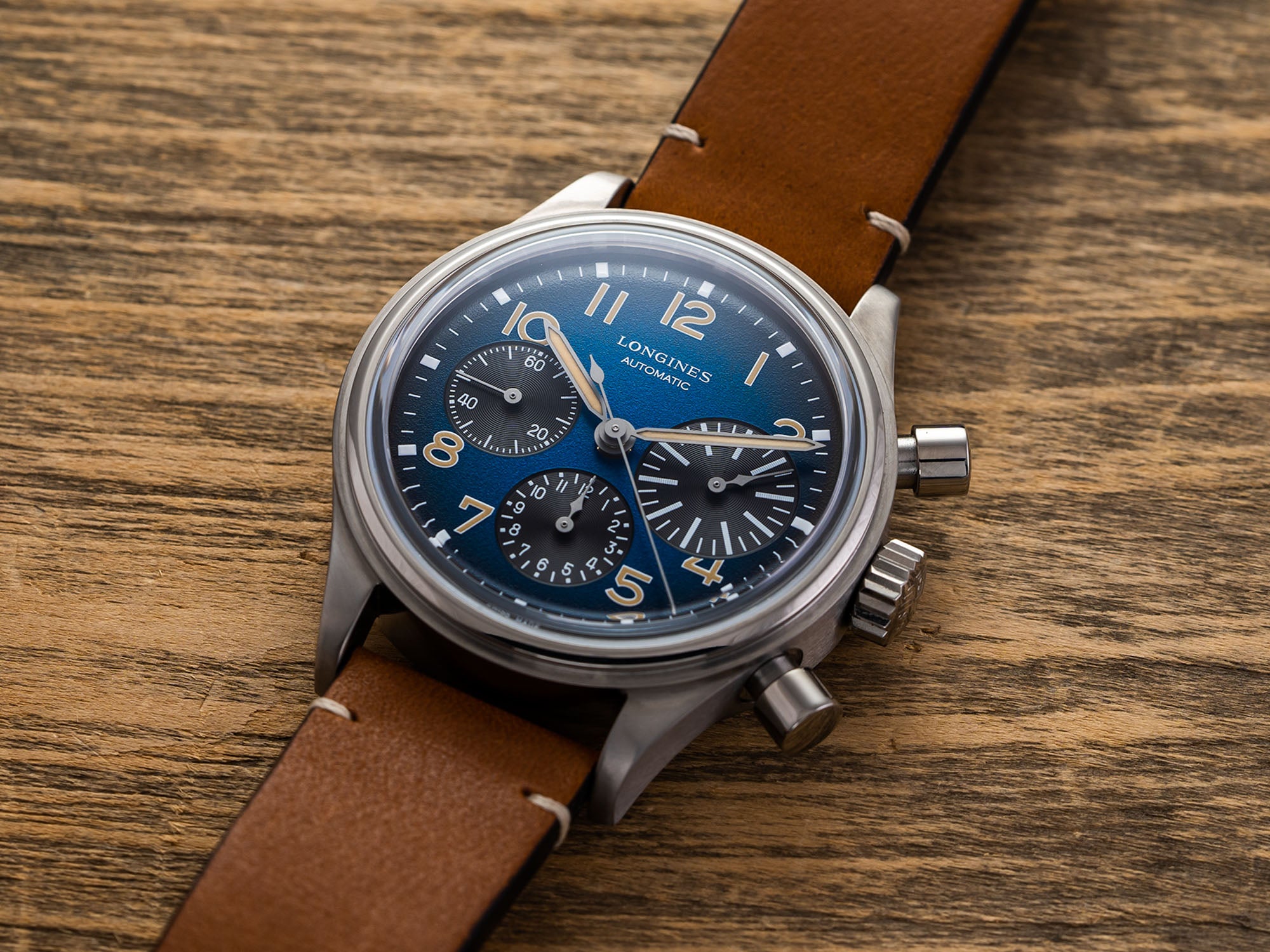
Longines continued making advancements in chronograph technology throughout the 1930s and ‘40s. Its Caliber 13ZN from 1936, with a patented flyback mechanism, was one of the most technically advanced of its time. Another patent was filed in 1938 for one of the world’s first waterproof chronographs, equipped with the now-familiar Longines mushroom-shaped pushers. A new evolution of Caliber 13ZN, which debuted in 1942, established a new way to count the elapsed minutes, on the main dial rather than on a subdial. In the 1950s, Longines became one of the first watchmakers to introduce product “families,” today a staple of the watch industry; the first was the Conquest collection in 1954, which remains in the Longines portfolio today and gave rise to the HydroConquest subfamily of sporty dive watches. The dressier Flagship collection, also recently reintroduced, followed in 1956.
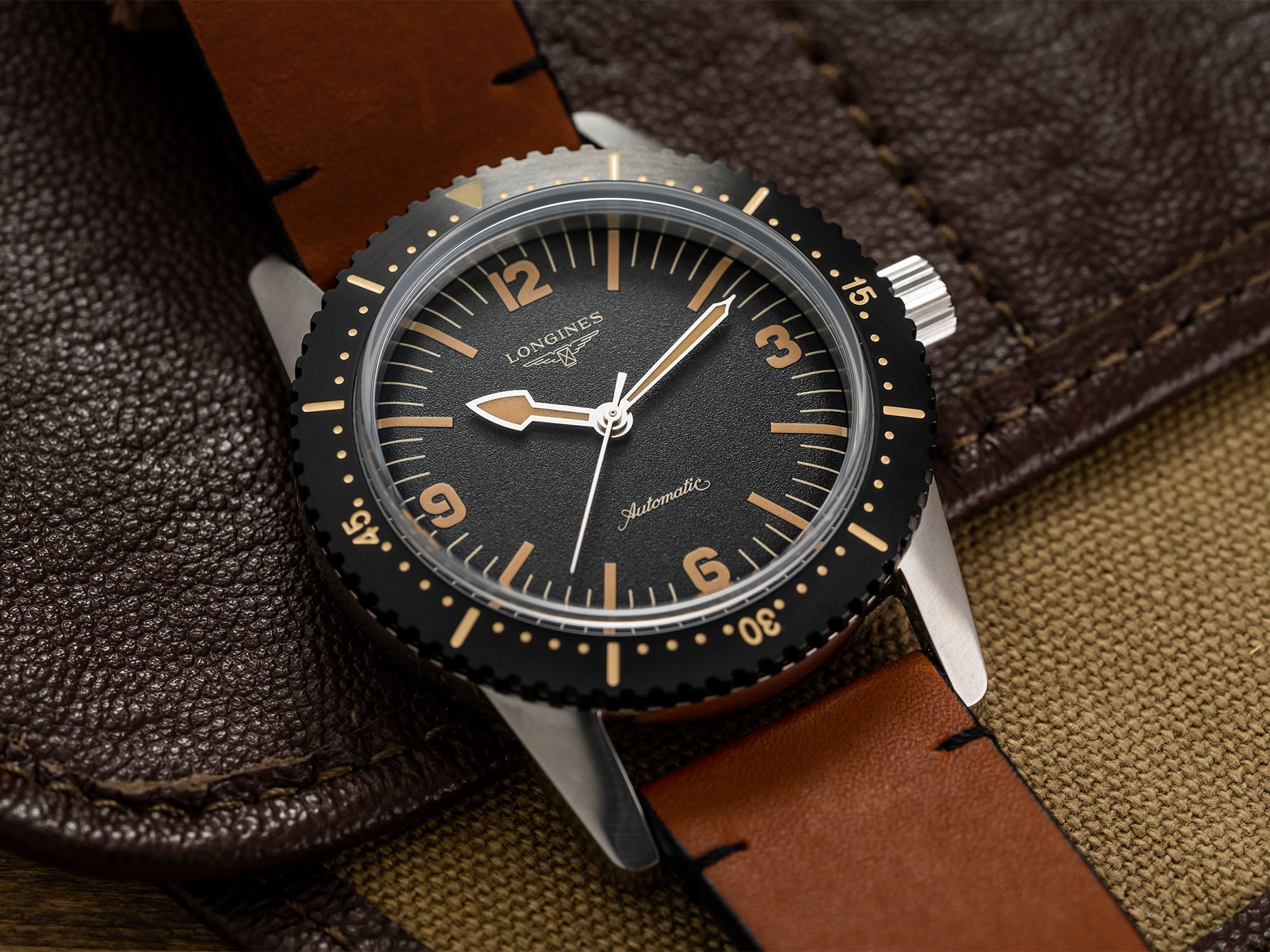
Professional and recreational diving were growing pursuits in the 1950s and early 1960s, and Longines was among the many watch manufacturers to respond to it with purpose-built, highly water-resistant watches for underwater use. The Nautilus Skin Diver, which debuted in 1958, was equipped with a patented “compressor” design with a gasket that tightened the case's water resistance as more water pressure was applied. The spirit and design of this groundbreaking model lives on in the Heritage Skin Diver (above). The following year of 1959 saw the launch of another dive watch, whose 120-meter water resistant case was outfitted with two crowns and housed the Longines Caliber 19AS. The model, in which the second crown operated an inner rotating dive-scale bezel, provided the template for today’s popular Legend Diver collection.
Quartz Era & Mechanical Revival (1960-2005)
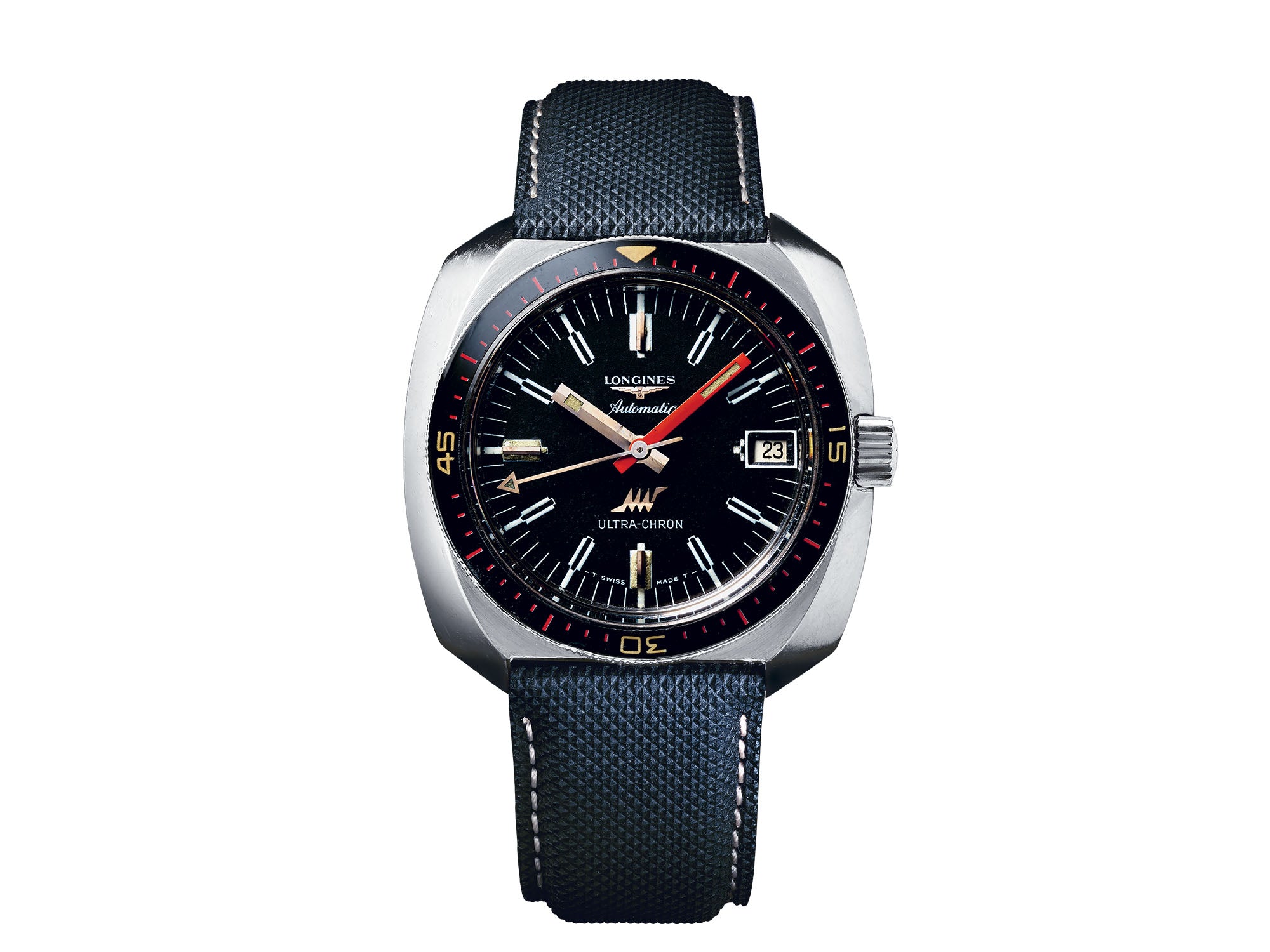
While Longines never fully abandoned classical mechanical watchmaking, the company was rare among traditional Swiss watch firms in its embrace of the quartz timekeeping technology, spearheaded by Japanese brands like Seiko, that emerged onto the scene in the late 1960s and exerted an influence over the entire industry throughout the ‘70s and ‘80s. Quartz movements were prized for their accuracy, and Longines had already been pushing the boundaries of timing precision on the mechanical side, introducing its high-frequency Caliber 360, with its 36,000-vph frequency, in 1959, and installing it in the first Longines Ultra-Chron (above) in 1967 — two years before Zenith introduced its El Primero caliber, perhaps the most renowned of high-frequency movements. (A new version of the Ultra-Chron made its debut in 2022.) Longines introduced the Ultra Quartz in 1969, which at the time was the most accurate production wristwatch, following it up with an LCD digital version in 1972 and the ultra-thin analog “Golden Leaf” in 1979.
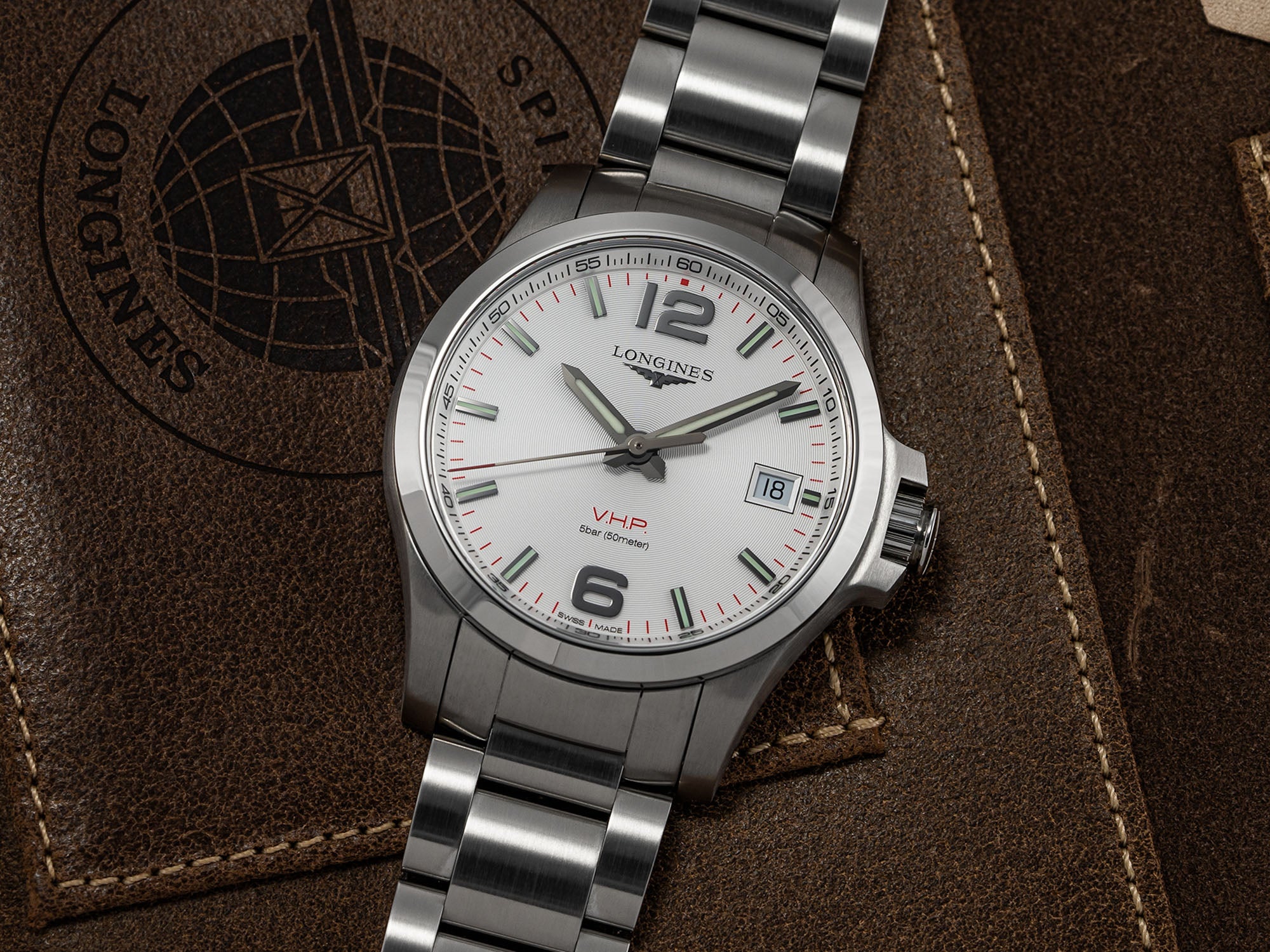 In 1984, in the throes of what most Swiss watchmakers still refer to as the “Quartz Crisis,” Longines further leaned into the trending technology with the release of the Conquest VHP, the initials standing for “Very High Precision.” The current version of the Conquest VHP (above) launched in 2017, outfitted with the ETA-produced Caliber L288.2 (Longines became part of the Swatch Group, which also owns the movement-making giant ETA, in 1983.) The movement — dubbed Caliber L289.2 in its chronograph-equipped version — is notable for its precision of +/- 5 seconds per year, higher than standard quartz calibers; its use of a GPD (gear position detection) system that quickly resets the watch’s hands after an impact or exposure to a magnetic field; and its exceptionally long battery life of nearly five years.
In 1984, in the throes of what most Swiss watchmakers still refer to as the “Quartz Crisis,” Longines further leaned into the trending technology with the release of the Conquest VHP, the initials standing for “Very High Precision.” The current version of the Conquest VHP (above) launched in 2017, outfitted with the ETA-produced Caliber L288.2 (Longines became part of the Swatch Group, which also owns the movement-making giant ETA, in 1983.) The movement — dubbed Caliber L289.2 in its chronograph-equipped version — is notable for its precision of +/- 5 seconds per year, higher than standard quartz calibers; its use of a GPD (gear position detection) system that quickly resets the watch’s hands after an impact or exposure to a magnetic field; and its exceptionally long battery life of nearly five years.
Modern Mastery (The Master Collection, 2005 to the present)
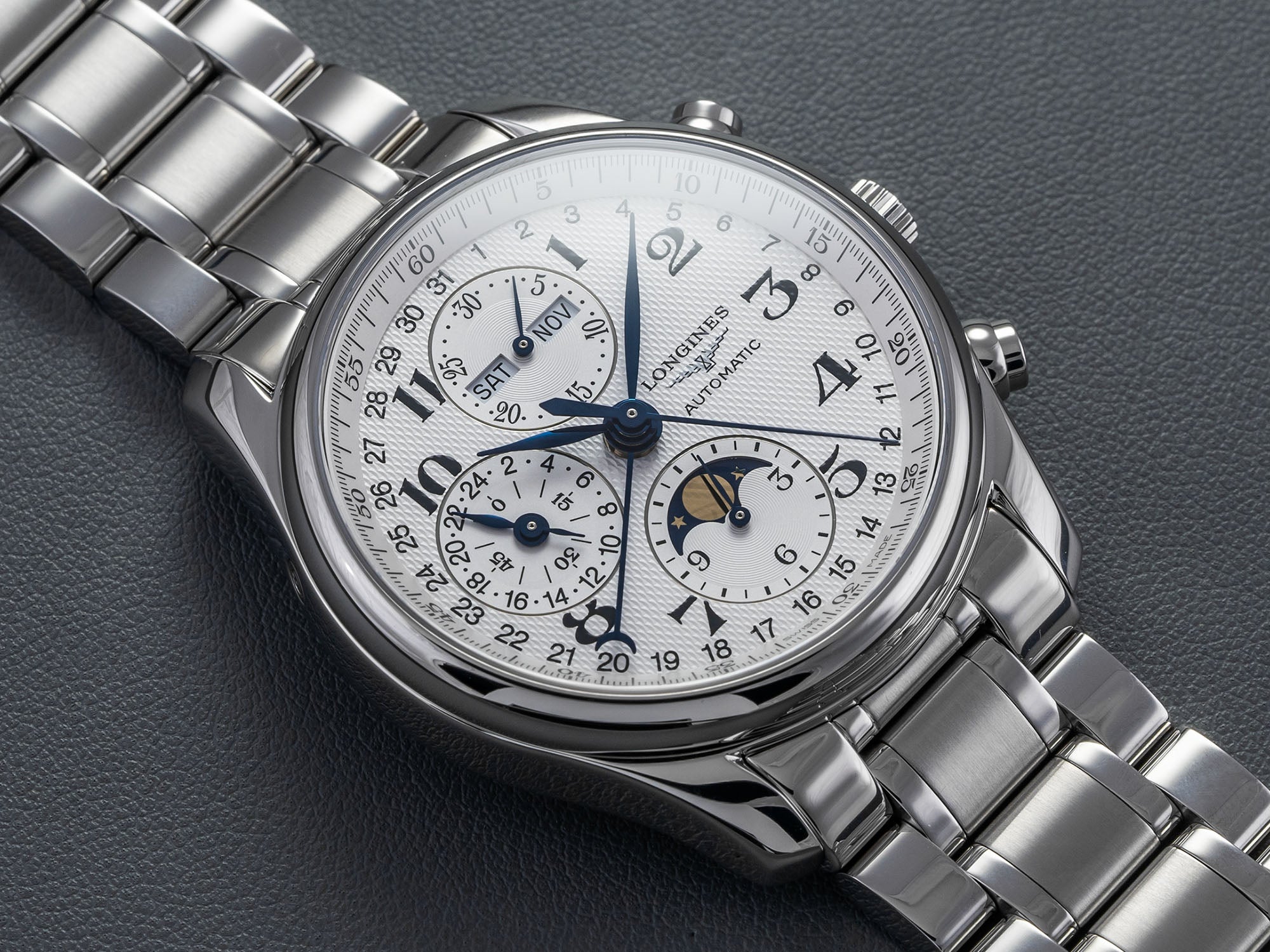
The Longines Master Collection debuted in 2005, and while watches within that collection feature various elements that call to mind vintage timepieces, Master Collection watches differ from those within the expansive Heritage collection in that none of them trace their design to specific historical predecessors. The watches’ defining features include self-winding mechanical movements in classical round cases; blued leaf hands; hours marked by either Roman numerals or elegant, calligraphic Arabic ones; and a barleycorn textured motif in the dials’ centers. Longines has used the Master Collection as the launch pad for a number of complications, from simple date displays, to moon-phases, to chronographs, to complete calendars, all the way up to models that combine multiple functions, such as the watch pictured above. In 2019, the Longines Master Collection welcomed its first Annual Calendar, a high complication just a notch below a perpetual calendar in its complexity, and priced it well below most others in its category, just shy of $2,500. While it is the Heritage collection, with its crowd-pleasing vintage vibes, that has drawn the most enthusiast attention in recent years, the Master Collection remains where it was always intended to be, on center stage as the Saint-Imier brand’s most versatile and most elegant contemporary collection for gentlemen — and thus, a no-brainer to host the first special editions developed to commemorate Longines’ 190th anniversary year in 2022.
Hands-On with the Master Collection 190th Anniversary
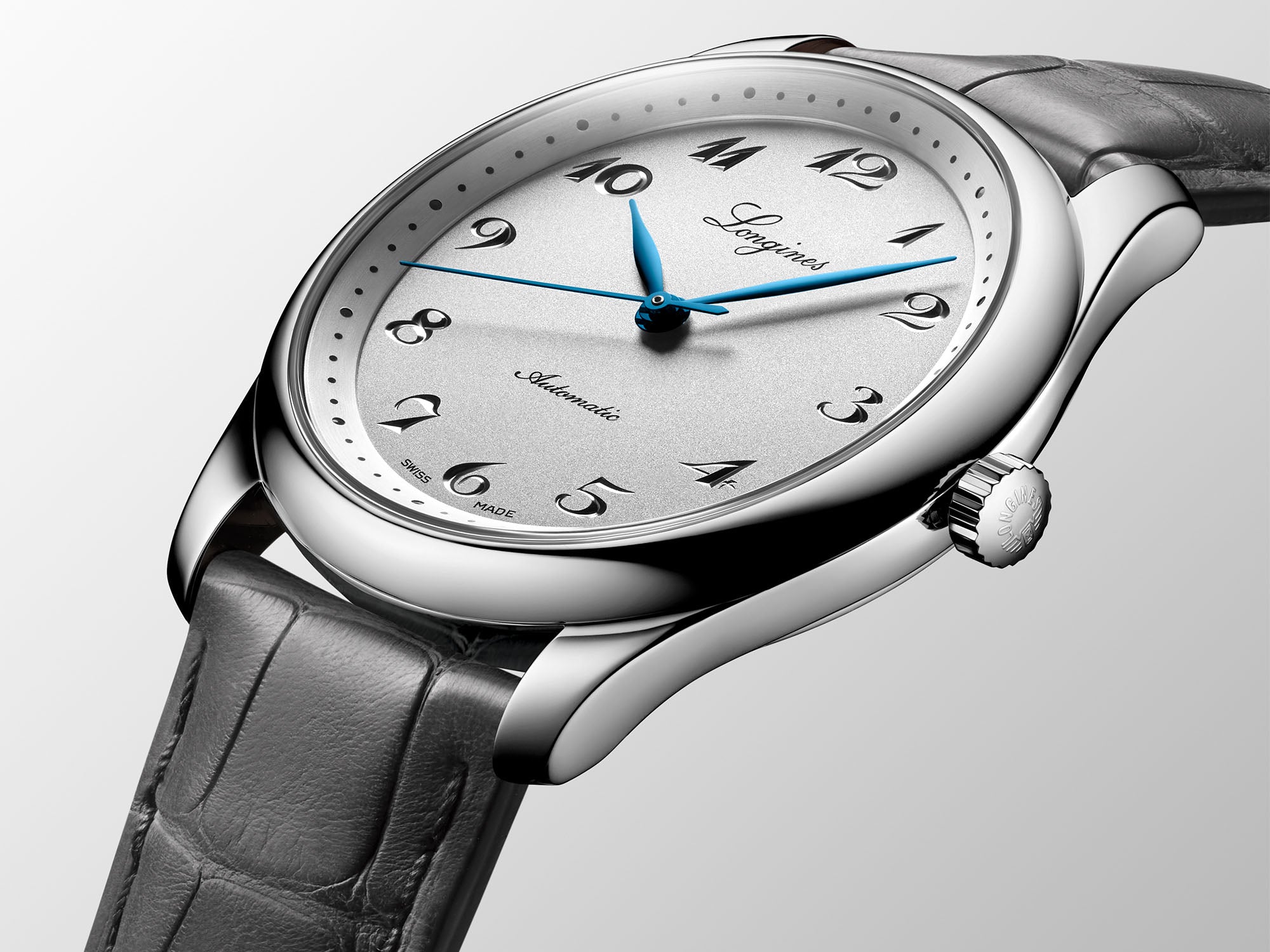
We spent some time with the most accessible model of the anniversary triumvirate, the Ref. L2.793.4.73.2 in polished stainless steel with a sandblasted silver dial. (The yellow gold and rose gold models, with brushed gray and grained anthracite dials, respectively, are both limited to 190 pieces.) The case deftly treads the line between vintage modesty and contemporary boldness, at 40mm in diameter. In profile, it measures a svelte 9.35mm, with bluntly tapering lugs that flow seamlessly from the case middle. The bezel is thin and slightly convex, framing a mostly flat sapphire crystal with a subtle, almost imperceptibly domed center. At just shy of 70 grams, it’s suitably light on the wrist.
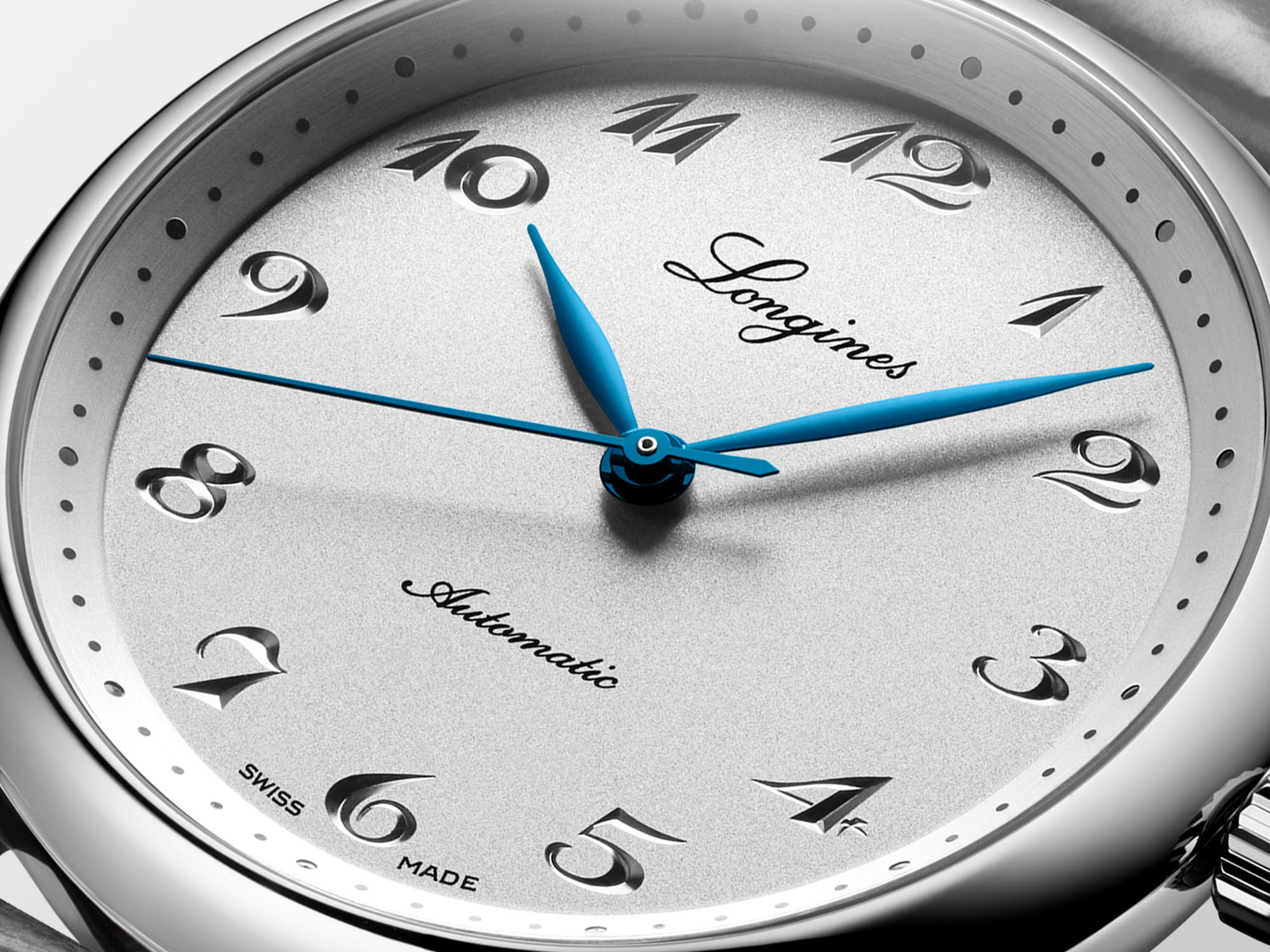
The dial is one that evokes elements of Longines’s long watchmaking history while still being distinctly different from anything else the brand has done in decades. The gorgeous, artistically rendered hour numerals — 12 of them, uninterrupted by the 3 o’clock date window that is ubiquitous on most modern Longines watches — have been delicately engraved into the dial. The font is a familiar one, used on many other Master Collection models that have preceded these special editions, but never has it been executed in quite this manner, giving the dial a sense of depth that belies its overall simplicity. Adding to the vintage character are three blued, faceted steel hands — leaf-shaped for the hour and minute, needle-shaped for the central seconds — and the classical cursive typography employed for the “Longines'' text below 12 o’clock and the “Automatic” designation that balances it out above 6 o’clock. The minutes are marked in an understated fashion on the dial’s flange, by black-printed dots, slightly thicker at each five-minute position.
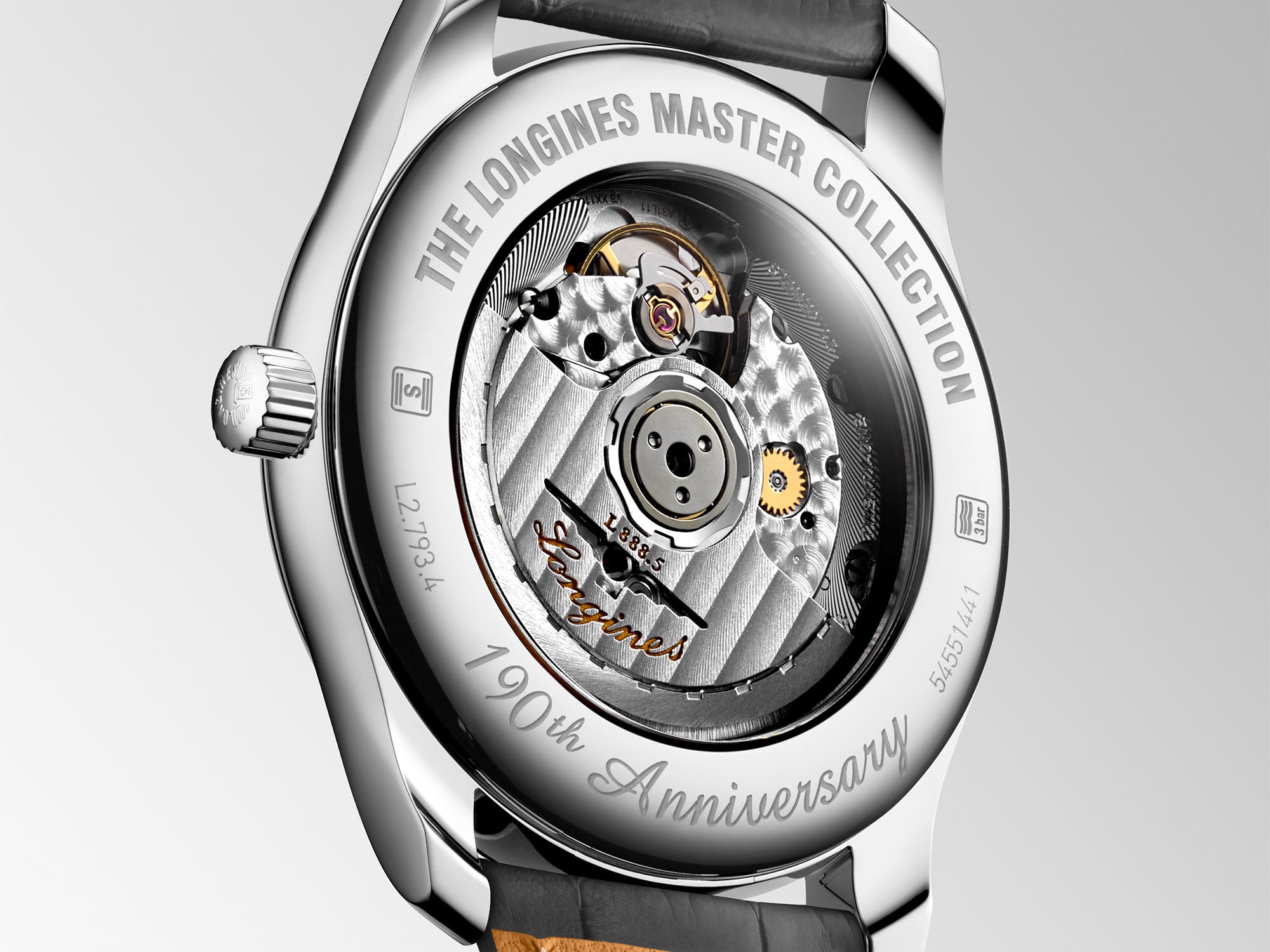
“Automatic,” of course, refers to the movement, Longines Caliber L888.5, which Longines describes as both “exclusive” and “in-house.” The decorative rotor with a cutout Longines winged-hourglass emblem attests to the former term, though the latter is a bit harder to codify. Peeling back the layers of its pedigree, the movement is based on the ETA A31. L11, which is made exclusively by ETA for Longines watches, in several iterations. The A31.L11 movement is itself based on the ETA 2892-A2, which can be found as the base of many other movements throughout the industry, inside and outside the Swatch Group, so the “in-house” terminology gets a bit looser as one peels back the generations. Nevertheless, the automatic movement inside the Master Collection 190th Anniversary editions offers a high level of technical refinement and decorative embellishment for the sticker price: it includes a balance spring made of silicon, a substance resistant to both friction and magnetic fields, which helps the watch maintain better timekeeping precision. The movement holds a weekend-proof 72-hour power reserve when fully wound. Its other decorative highlights include the rotor’s côtes de Genève motif and golden logo engraving and perlage on the mainplate.
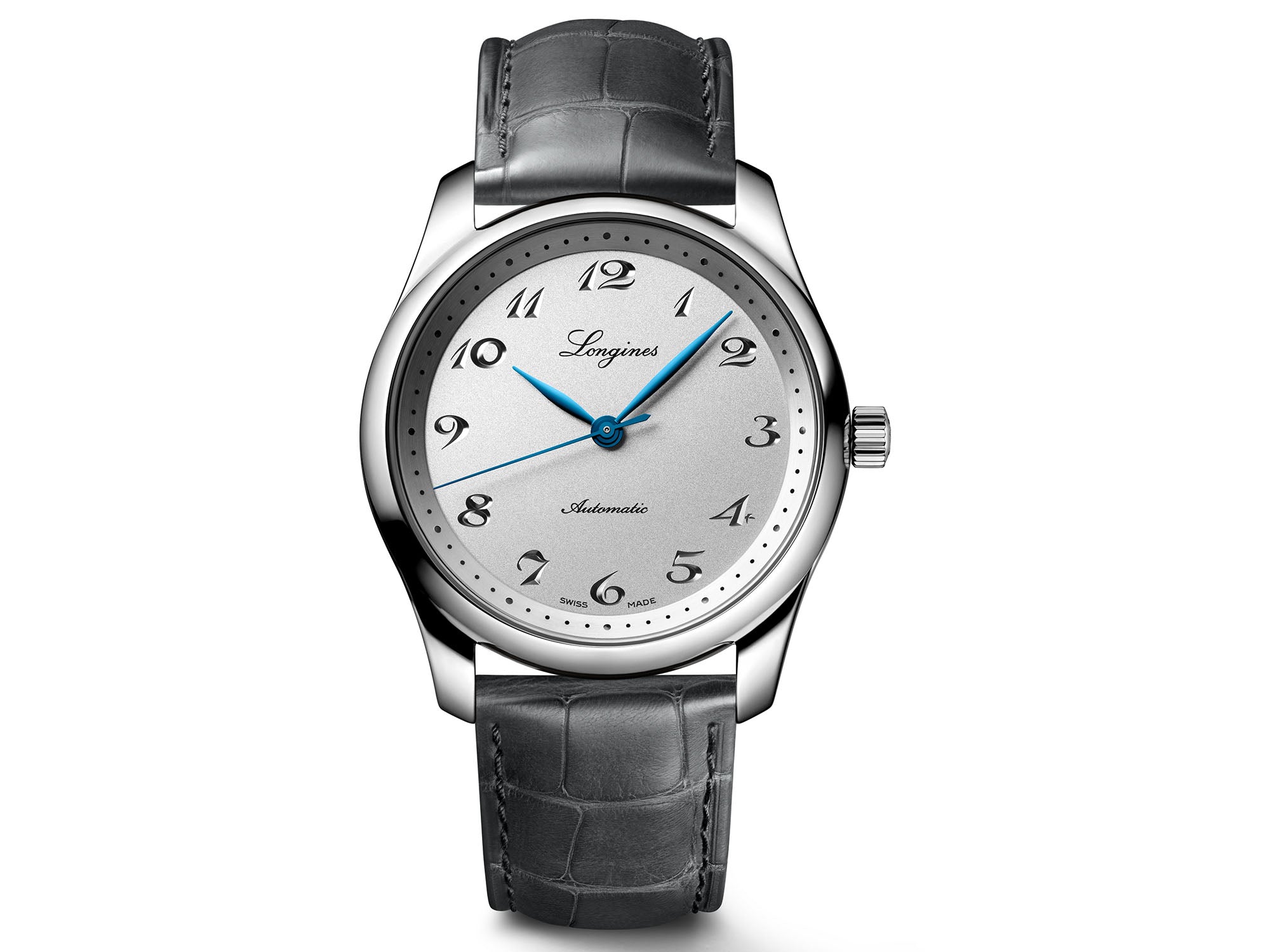
The stainless steel watch comes on an anthracite gray alligator leather strap with tone-on-tone stitching, whose muted tone resonates perfectly with the silver tones and blue details of the dial while also reflecting the intriguing shadow effects on the engraved hour numerals when they catch light at certain angles. The rough textured ridges of the scales blend with the soft smoothness of the larger surface areas for a pleasant tactile experience on the exterior, while the soft, buttery underside of the strap feels comfortable on the skin of the wrist. The strap fastens to the wrist with a double-folding steel clasp with safety buttons and predominantly polished surfaces.
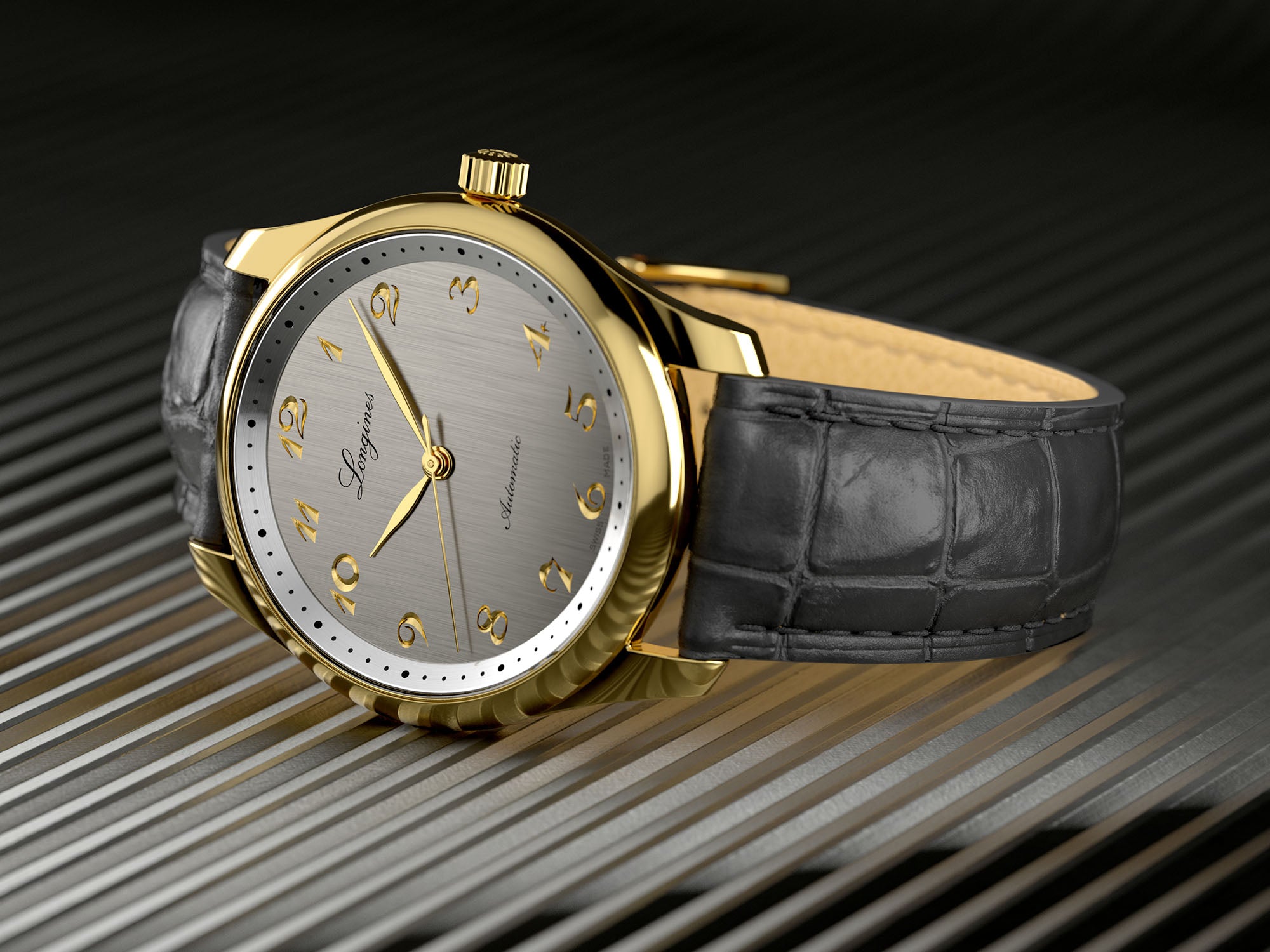 The Longines Master Collection 190th Anniversary model in stainless steel carries an MSRP of $2,400, while the gold models (Ref. L2.793.6.73.2 in yellow gold pictured above), both limited and numbered editions of 190 pieces, come in at $12,000.
The Longines Master Collection 190th Anniversary model in stainless steel carries an MSRP of $2,400, while the gold models (Ref. L2.793.6.73.2 in yellow gold pictured above), both limited and numbered editions of 190 pieces, come in at $12,000.
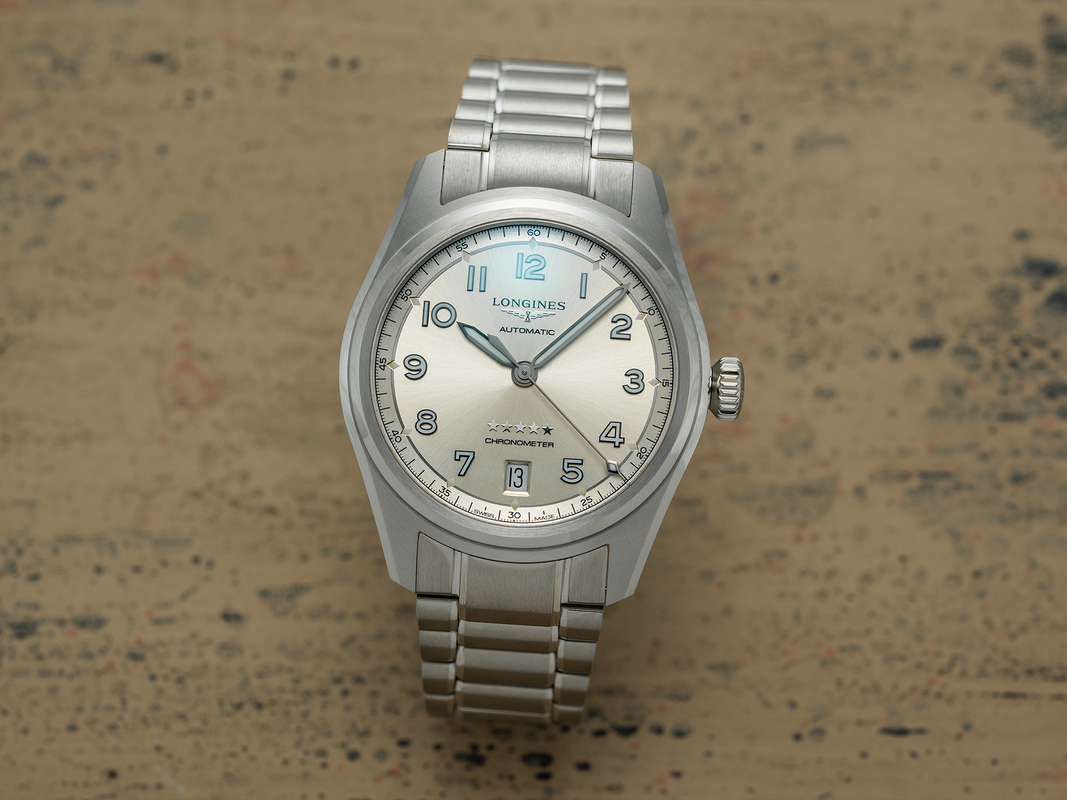

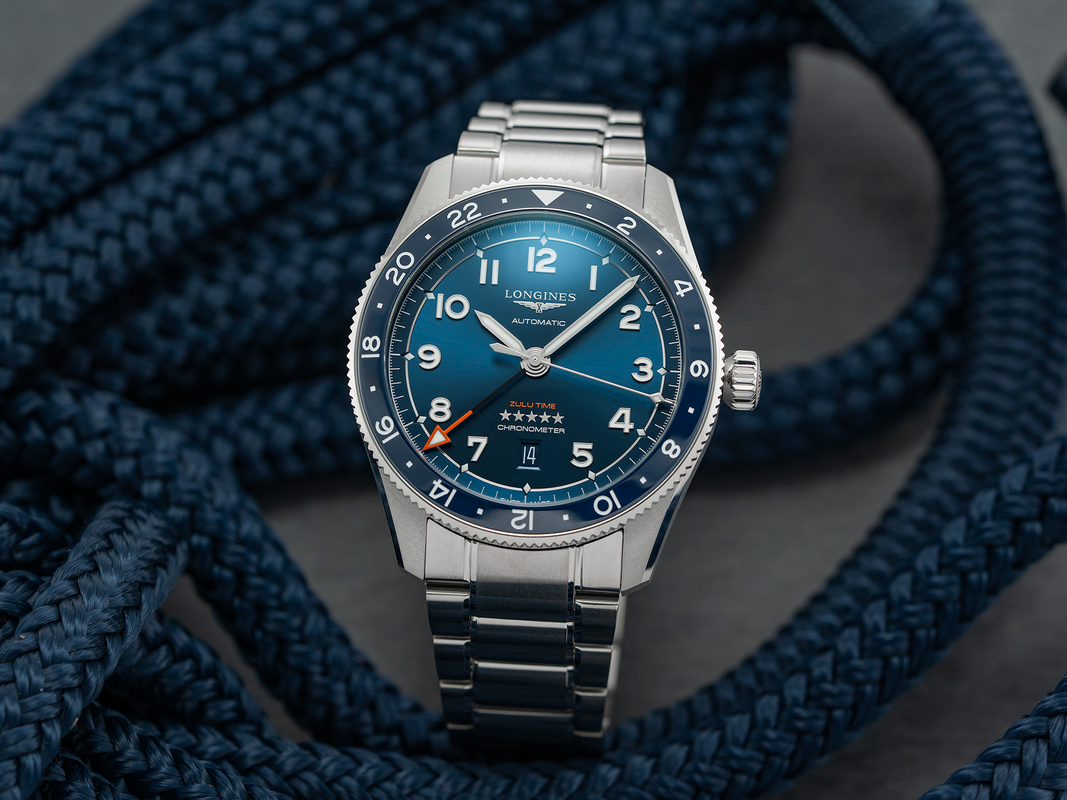
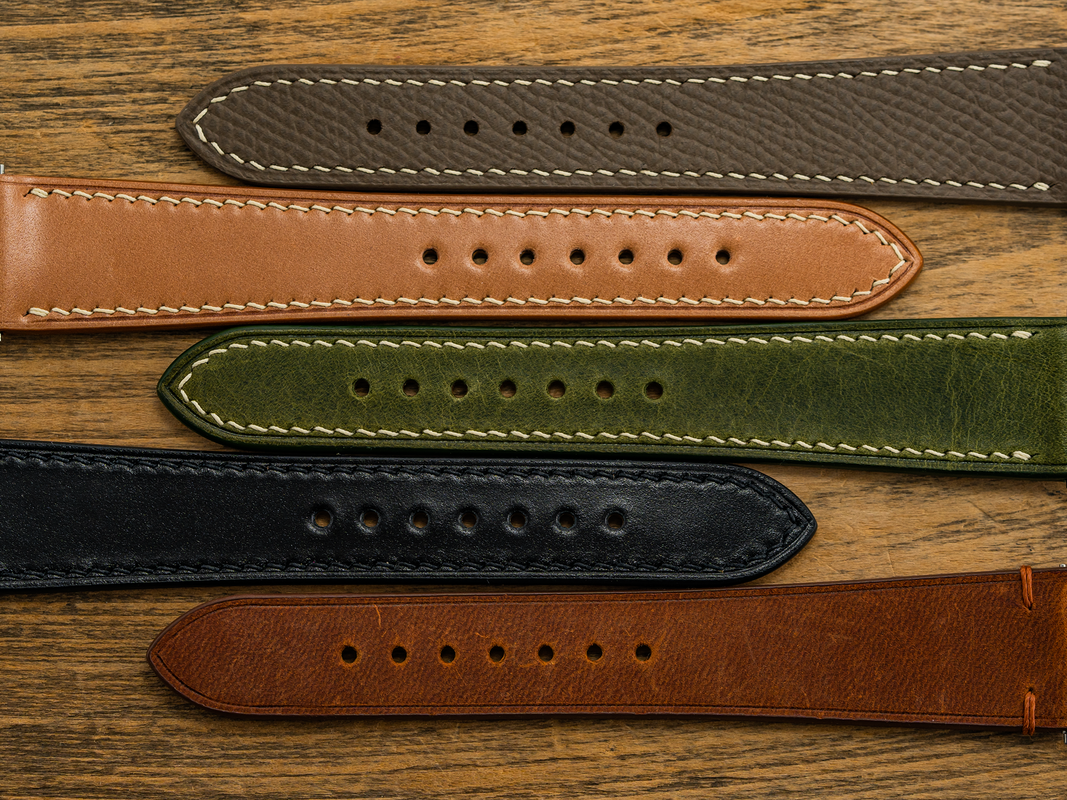
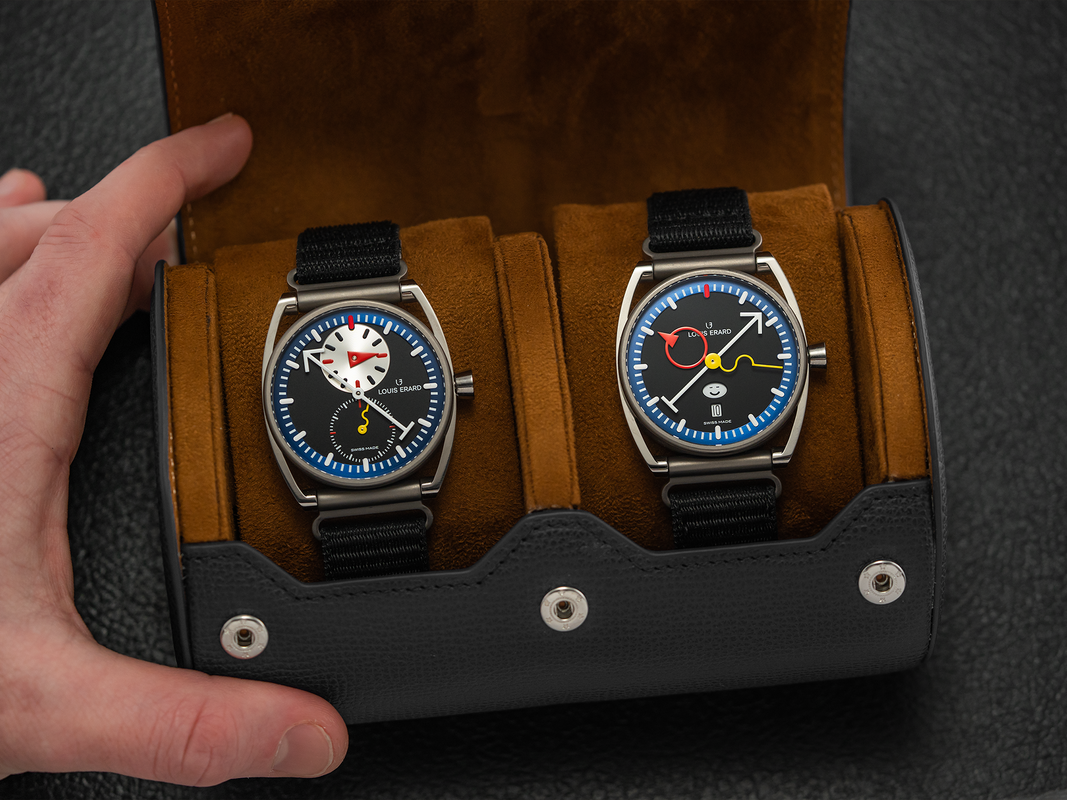
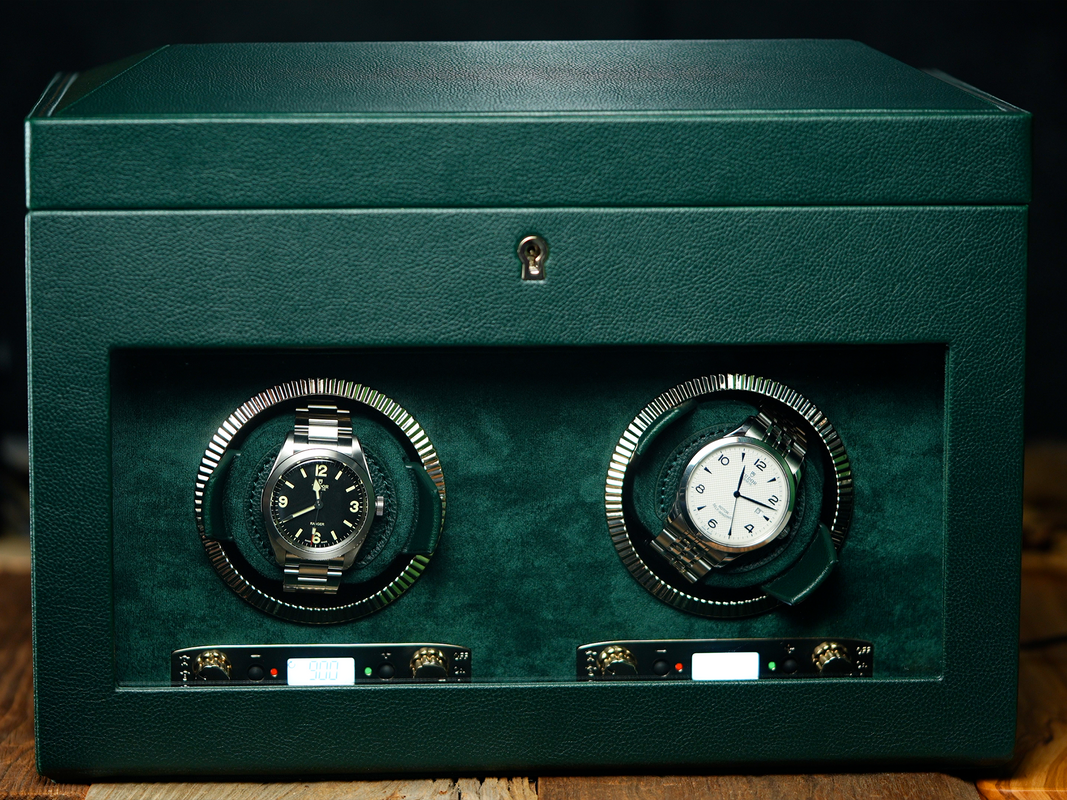
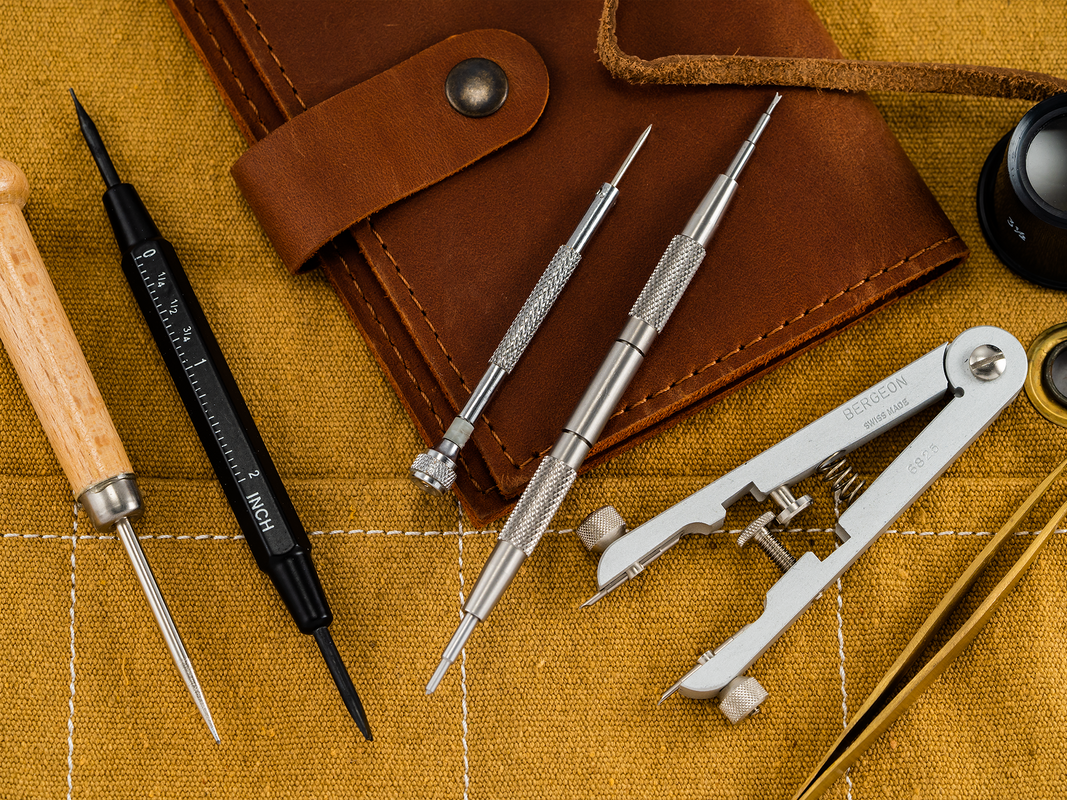

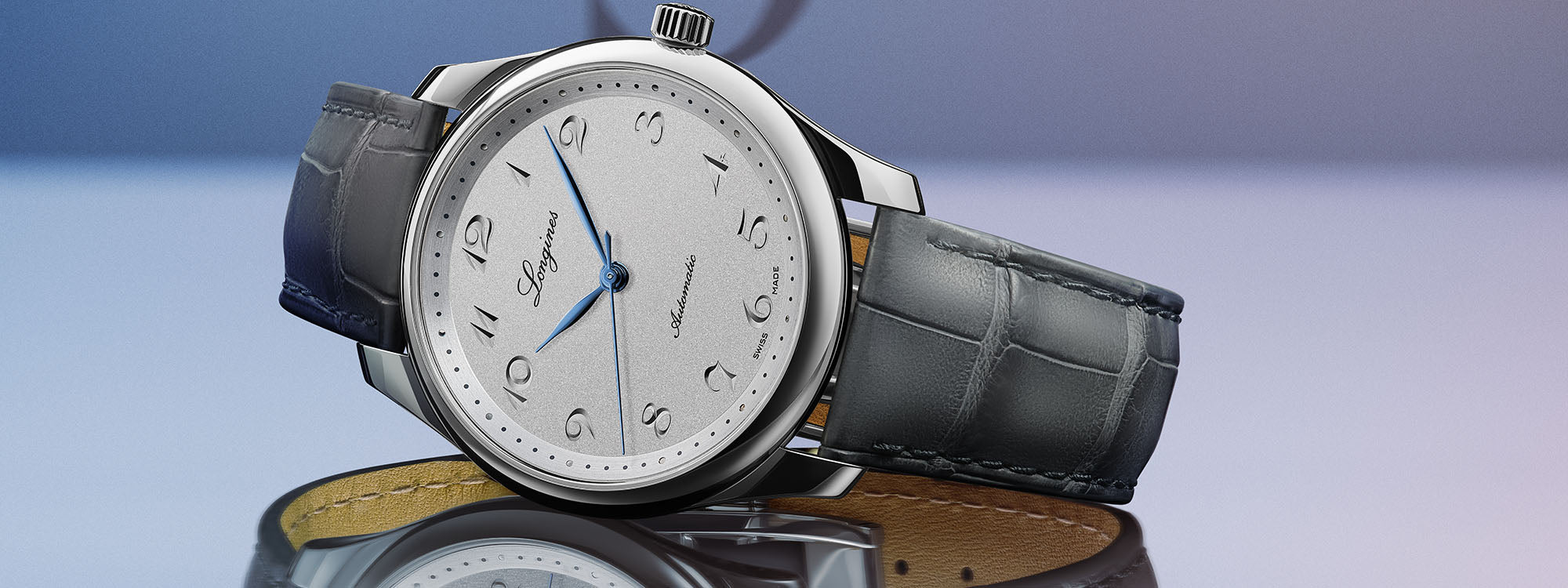


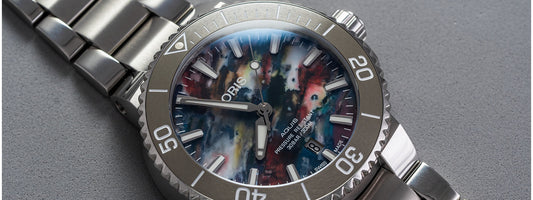
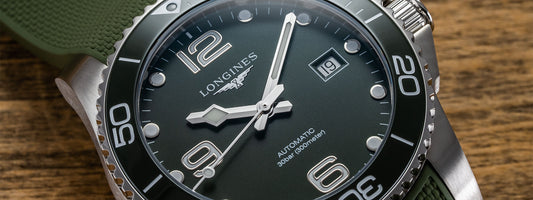


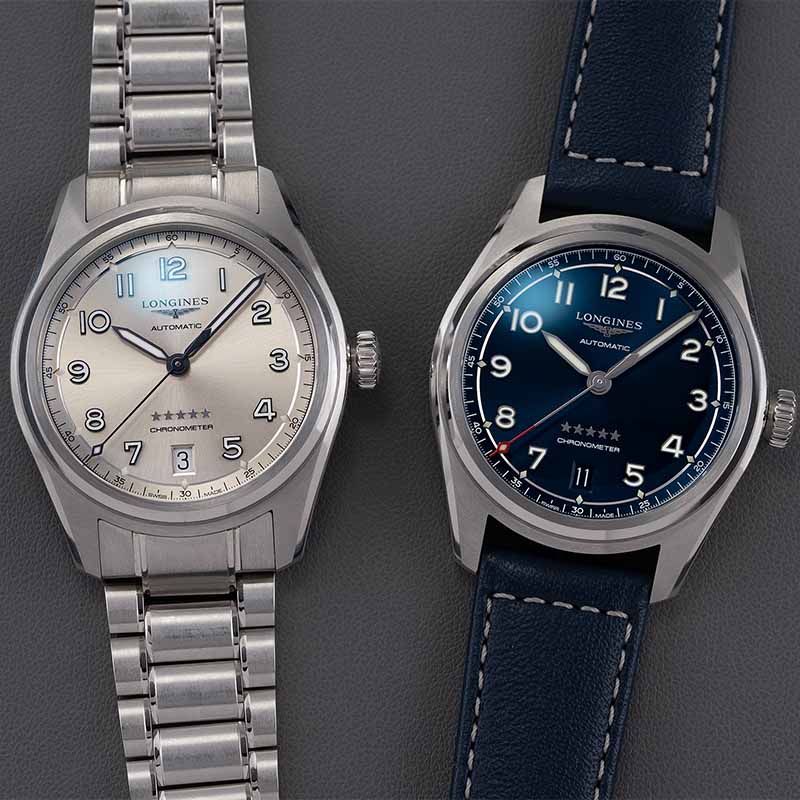
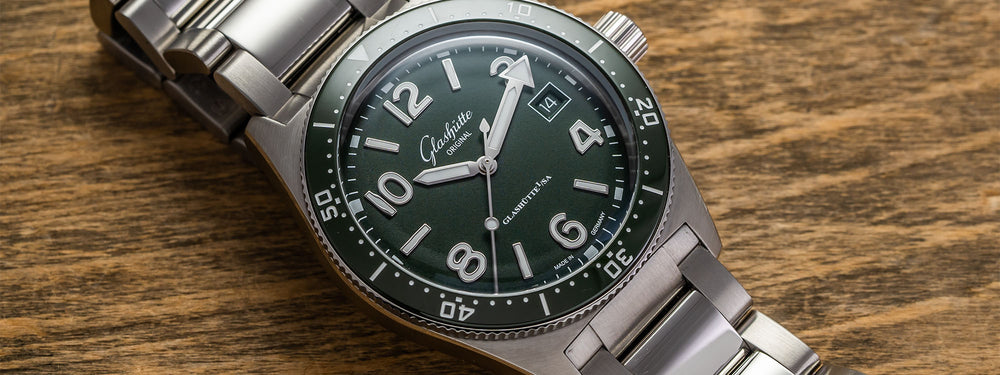
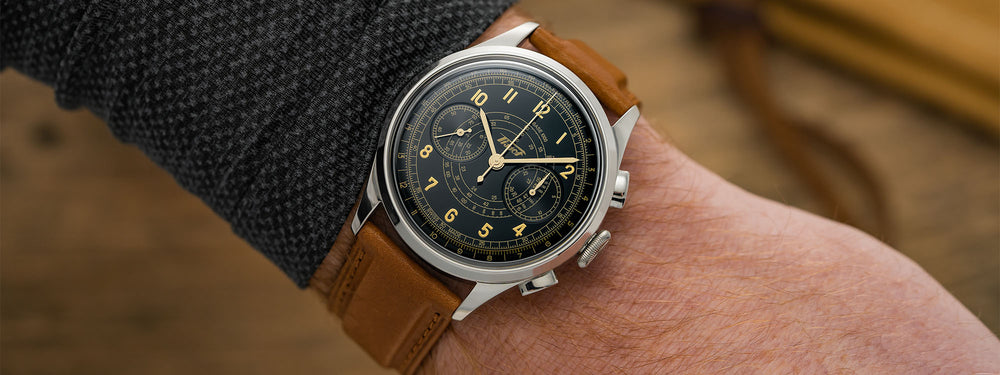


Start the Conversation